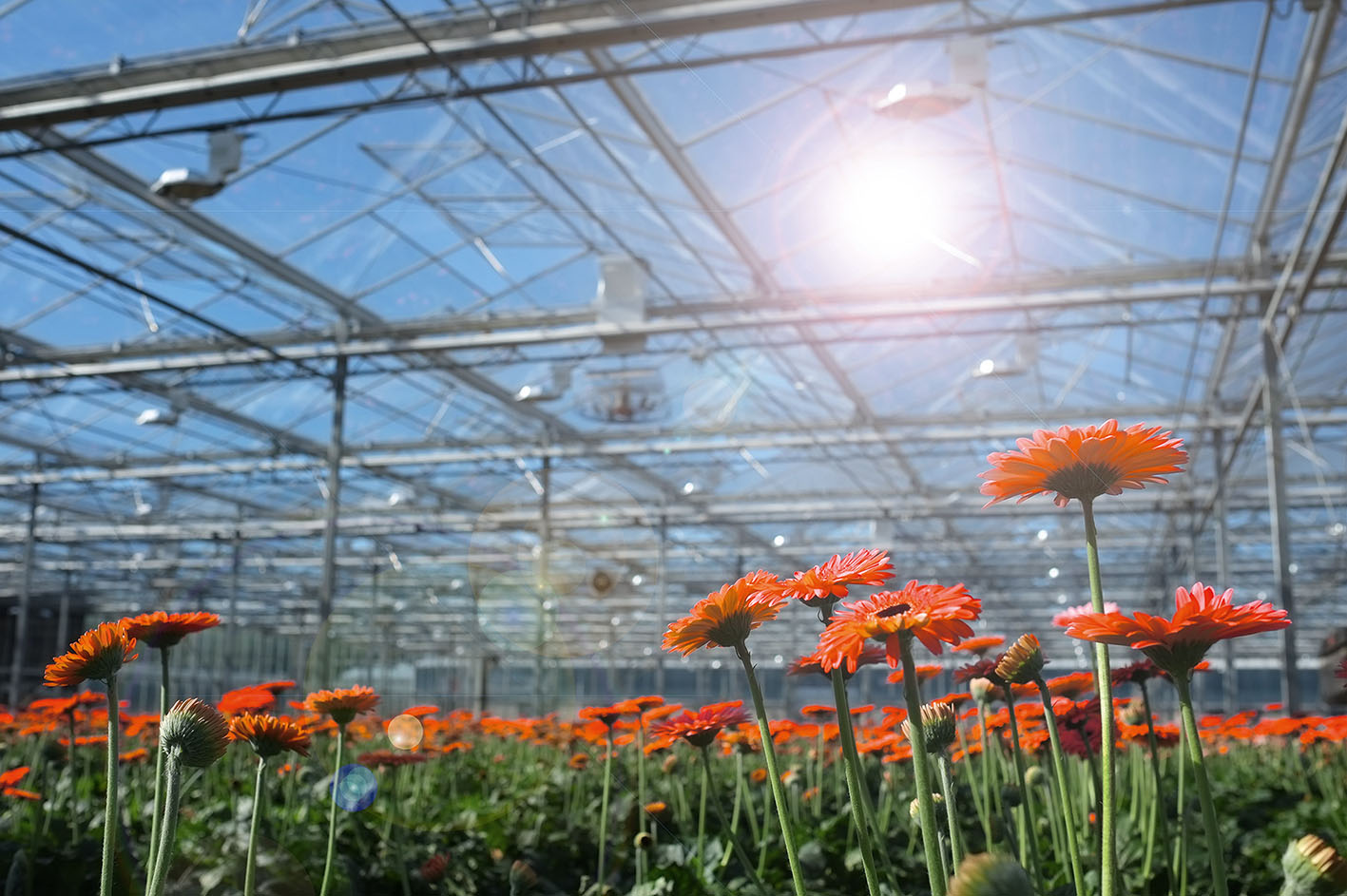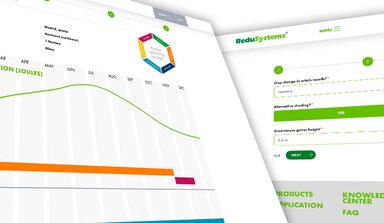Ten percent higher light incidence in greenhouse
Every percent can be converted into higher production. Mardenkro offers a package of solutions designed to improve the incidence of light into a greenhouse by as much as ten percent.
In Northwest Europe, Canada and parts of the US, the available natural light is a limiting factor for a part of the year. Simply not enough sunlight penetrates the greenhouse to achieve optimal production. Assimilation light can be a good solution, but first of all, improving the incidence of natural light is required. This always pays off: every percent more sunlight in the greenhouse translates into a better production result and better quality. Mardenkro is now introducing a cohesive package of solutions designed to admit up to ten percent more natural light into the greenhouse.
New Approach
Mardenkro is known for coatings that reflect excessive sunlight. In the past, the ReduSol coating represented a breakthrough in comparison to traditional chalk products. The knowledge about the physiology of horticulture crops has significantly evolved in recent years. As a result, Mardenkro has expanded its product range from shading to managing light. Crops often benefit from high light levels, provided it is distributed well and provided plant temperatures do not become excessive. This insight has resulted in solutions such as ReduFuse, ReduHeat and ReduFuse IR.
Now it is time for the next phase: improving the incidence of light itself. Over the past few years, Mardenkro has devoted a great deal of R&D to smart solutions, such as AntiCondens and AntiReflect to supplement existing glass cleaning products.

More light equates to more production
Throughout the year, part of the sunlight reflects off the glasshouse roof and therefore does not reach the crop. This is at the expense of production, because every percent of light roughly translates into an increase of one percent in production. AntiReflect reduces reflection and consequently improves the incidence of light.
Measurements conducted by Wageningen University & Research show that light incidence increases by at least 3% with AntiReflect. That applies to any month of the year. When the sunlight has a high angle of incidence, this can go up to as much as 5%! Furthermore, calculations show that this higher incidence of light can effectively be converted into higher production. How much though differs by crop, but on average the increase in production is equal to the percentage improvement in the incidence of light.
The first growers now have experience with this new solution and they are indeed achieving higher production. For example, in 2017, tomato nursery Van Adrichem in Steenbergen (NL) achieved a 5% increase in production using AntiReflect in comparison with an untreated compartment in the greenhouse. This was attributable to higher fruit weight. Other farms as well are reporting an increase in production due to the application of AntiReflect.
Spreading condensation = light gain
During cold periods, glass is often constantly wet on the inside. This condensation impedes light incidence by 5 to 8%. The solution is simple: AntiCondens. This coating operates as a spreader and creates a finely spread out water film on the glass instead of large drops. Large drops impede the incidence of light, while a water film enables better transmission. The application of AntiCondens this way significantly contributes to a better light transmission during low-light months. Because light is a limiting factor, better light incidence automatically translates into better production.
Effective cleaning always pays off
AntiCondens and AntiReflect are highly advanced products. However, improved light incidence really starts with something that is receiving very little attention: regularly cleaning the greenhouse roof, both on the inside and on the outside. The glass becomes dirty over time due to a wide range of factors: dust, soot, algae and the deposit of volatile crop protection agents.
Sometimes light transmission all of a sudden drops sharply, for example when desert sand lands on the roof. When this happens, it is important to quickly clean the window panes because this truly affects production. But paying attention to the creeping reduction in light incidence is just as important. Here too the percentages can be considerable.
It is only possible to properly clean the inside of the roof when the greenhouse is empty. The GS-4 glass cleaning agent is the right cleaning product for this job. It effectively removes dirt without harming the glass.
AntiReflect, AntiCondens and proper cleaning form a cohesive package of solutions for improving light incidence. Together they provide for up to 10% more light in the greenhouse.
If you would like to know by how much you can increase your production with these solutions, ask for a free light plan here.
